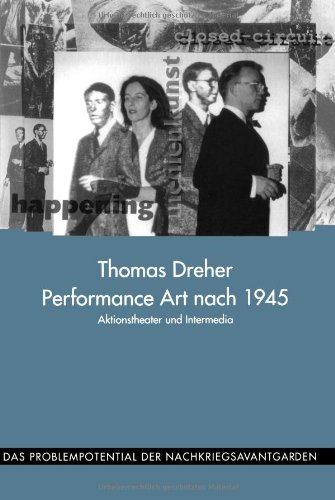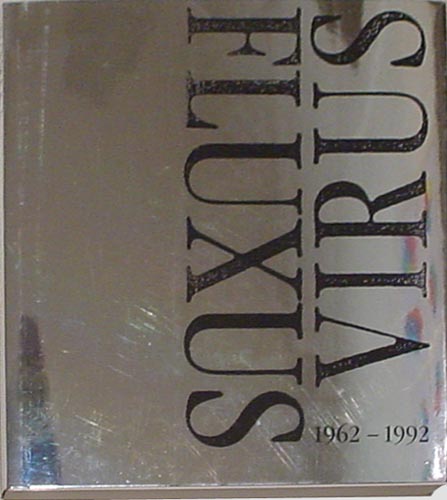Thomas Dreher: Performance Art nach 1945. Aktionstheater und Intermedia (2001) [German]
Filed under book | Tags: · action art, art, art history, body, body art, dance, happening, intermedia, media art, performance, performance art, theatre, viennese actionism

This book explores a spectrum of types and definitions of performance, from action painting, Gutai, Viennese Action art, and destruction in art to body and transgressive art, and from closed-circuit video to computer and telecommunications in performance. Sections of the book also address solo, as well as collective, performance, multifunctionalism and conceptual performance, the role of the spectator, and other neglected aspects of the range of performance.
Publisher Wilhelm Fink, Munich, 2001
Das Problempotential der Nachkriegsavantgarden series, 3
ISBN 3770534522, 9783770534524
543 pages
Reviews: Michael Hauffen (Kunstforum, 2001, DE), Holger Schulze (IASL, 2002, DE).
Comment (0)Fluxus Virus, 1962-1992 (1992) [English/German]
Filed under book, catalogue | Tags: · art, art history, fluxus, happening, intermedia, performance art

Catalogue of an exhibition held in Cologne, containing essays on Fluxus by Ken Friedman, Peter Frank, Ina Conzen Meairs, Wilfried Dörstel/ Reier Steinberg, Hannah Higgins, Karen Moss, Owen Smith, David Doris, Dieter Daniels, Ina Blom, Mariane Hoffan, Michael Erlhoff, James Lewes, and Manfred de la Motte.
Edited by Ken Friedman
Publisher Galerie Schüppenhauer, Cologne, 1992
ISBN 3926226285, 9783926226280
399 pages
via VP
For more on Fluxus see Monoskop wiki
Comment (0)Chris Thompson: Felt: Fluxus, Joseph Beuys, and the Dalai Lama (2011)
Filed under book | Tags: · art, art history, buddhism, fluxus, intermedia, nothing, silence

“Felt provides a nonlinear look at the engagement of the postwar avant-garde with Eastern spirituality, a context in which the German artist Joseph Beuys appears as an uneasy shaman. Centered on a highly publicized yet famously inconclusive 1982 meeting between Beuys and the Dalai Lama, arranged by the Dutch artist Louwrien Wijers, Chris Thompson explores the interconnections among Beuys, the Fluxus movement, and Eastern philosophy and spiritual practice.
Building from the resonance of felt, the fabric, in both Tibetan culture and in Beuys’s art, Thompson takes as his point of departure Deleuze and Guattari’s discussion in A Thousand Plateaus of felt as smooth space that is “in principle infinite, open, and unlimited in every direction,” its structure determined by chance as opposed to the planned, woven nature of most fabrics. Felt is thus seen as an alternative to the model of the network: felt’s anarchic form is not reducible to the regularity of the net, grid, or mesh, and the more it is pulled, tweaked, torn, and agitated, the greater its structural integrity.
Felt thus invents its methodology from the material that represents its object of inquiry and from this advances a reading of the avant-garde. At the same time, Thompson demonstrates that it is sometimes the failures of thought, the disappointing meetings, even the untimely deaths that open portals through which life flows into art and allows new conjunctions of life, art, and thought. Thompson explores both the well-known engagement of Fluxus artists with Eastern spirituality and the more elusive nature of Beuys’s own late interest in Tibetan culture, arriving at a sense of how such noncausal interactions—interhuman intrigue—create culture and shape contemporary art history.”
Publisher University of Minnesota Press, 2011
ISBN 0816653542, 9780816653546
319 pages
PDF (updated on 2020-7-1)
EPUB (updated on 2020-7-1)

